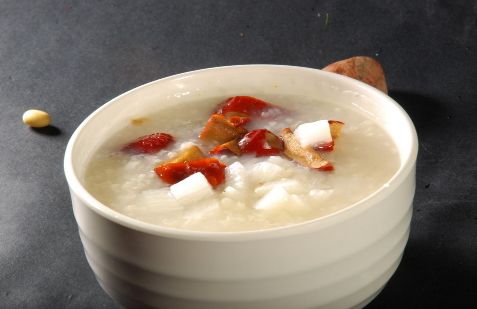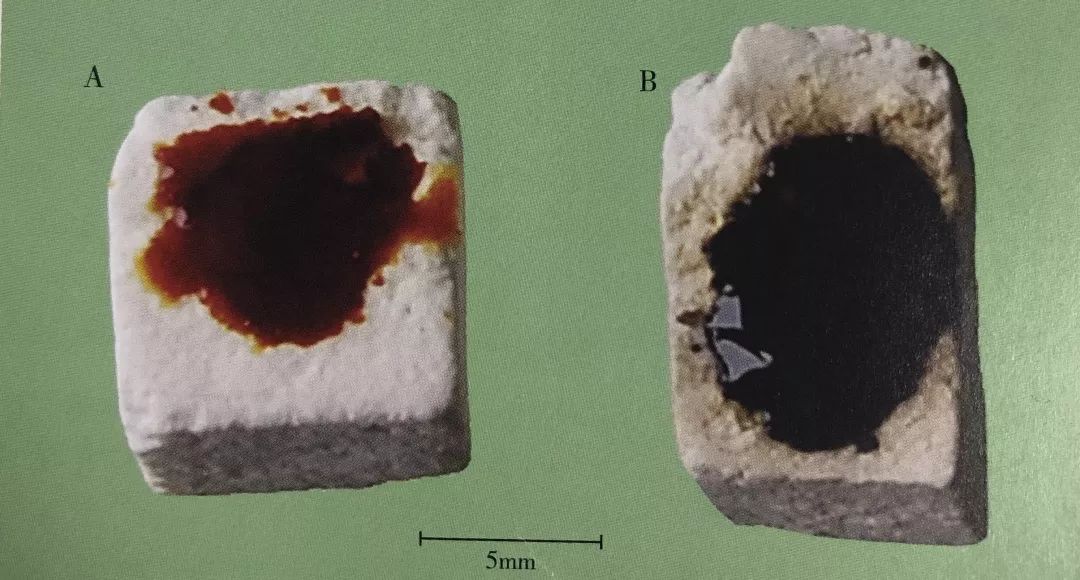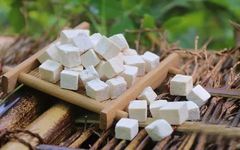
For details, click the image or link:mp.weixin.qq.com/s/coxmL7O1HSy5CMh_kAT8gA
Fu Ling (Poria), first recorded in the Shennong Bencao Jing (Shennong’s Classic of Materia Medica), is the sclerotium of the fungus Poria cocos, which primarily parasitizes the roots of pine trees. Fu Ling has calming, spleen-strengthening, diuretic, and edema-reducing effects. Modern research indicates that Fu Ling can also enhance immunity, exhibit anti-aging, anti-tumor, antibacterial, liver-protective, and blood sugar-lowering properties, making it an important medicinal material in China.

No.1
What is a sclerotium?
Many people often consume Fu Ling but mistakenly believe it is a type of plant tuber, similar to Rehmannia (Di Huang) or Pueraria (Fen Ge), unaware that Fu Ling is a type of medicinal fungus, specifically the sclerotium of the fungus Poria cocos, which cannot survive independently and generally parasitizes on pine wood.
During the reproductive process of the fungus, at a certain stage, the mycelium continuously differentiates, and the sclerotium is a dormant body formed by tightly interconnected and woven mycelium.

Fu Ling Sclerotium
The primary function of the sclerotium is to resist adverse environmental conditions. When the environment is suitable, the sclerotium can germinate to produce new nutrient mycelium or form new reproductive bodies from it.
For information on how Fu Ling is cultivated, you can watch the video below:
No.2
Which region produces the best Fu Ling?
The wild resources of Fu Ling are mainly distributed in Yunnan and Guizhou, with wild resources also found in Sichuan, Zhejiang, Jiangxi, and Hunan. Among these, the quality of Yunnan products is superior, hence it is referred to as “Yun Fu Ling,” a famous authentic medicinal material.
 Yunnan Province
Yunnan Province
The cultivation of Fu Ling historically concentrated in the Dabie Mountain area, where the provinces of Anhui, Hubei, and Henan meet. Among these, the yield and quality from Yuexi in Anhui are high, commonly referred to as “An Ling,” also considered an authentic medicinal material.

Dabie Mountain Area
According to the Chinese Medicinal Materials Production and Sales, it is recorded: “Wild ones are famous from Yunnan, while cultivated ones are abundant and of high quality from Anhui.” Due to the scarcity of wild resources and unstable supply, the market currently mainly consists of cultivated Fu Ling; the Fu Ling cultivated in the Dabie Mountain area, with its high yield, good quality, and low price, has become the choice for many medicinal material merchants.
In addition to the traditional Dabie Mountain production area, new production areas for Fu Ling have emerged, such as Guangdong, Guangxi, and Fujian, where the Fu Ling produced is larger but has a loose texture, resulting in lower quality, so care should be taken when purchasing.
No.3
Why is Fu Ling sweated?
Fu Ling cultivated products are harvested in July to September of the second year after inoculation. After harvesting, the soil and sand are removed, and the harvested Fu Ling is placed indoors in a wind-sheltered area, covered with dry straw for 5-6 days, then spread out to dry and piled again. This process is referred to as “sweating.” The Chinese Pharmacopoeia also records this.

Fu Ling Pieces
Sweating is a traditional processing method for medicinal materials. The purpose of “sweating” Fu Ling is to allow the moisture within the Fu Ling to evaporate, making the texture of Fu Ling firmer and increasing the content of poria acid, which primarily serves as a diuretic and is an effective component in Fu Ling.
In summary, “sweating” is beneficial for drying Fu Ling, improving the appearance of the finished product, and accumulating effective components. Fu Ling produced in traditional authentic production areas must undergo “sweating” to enhance its quality, reflecting the importance of its origin.
No.4
What are the differences between Bai Fu Ling, Chi Fu Ling, and Fu Shen?
In past clinical applications, Fu Ling was generally divided into three parts: the outer layer, which is light red after removing the skin, is called Chi Fu Ling; the inner layer, which is white, is called Bai Fu Ling; and the middle part, which has fine pine roots passing through, is called Fu Shen, also known as Bao Mu Shen.

Chi Fu Ling

Bai Fu Ling

Fu Shen
It is commonly believed that Chi Fu Ling is more effective for promoting diuresis, Bai Fu Ling is more effective for strengthening the spleen, and Fu Shen is used for calming the spirit.
These three are actually derived from the same sclerotium, and currently, Chi Fu Ling and Bai Fu Ling are no longer differentiated, and prescriptions are collectively referred to as Fu Ling.
Today, the commercial specifications of Fu Ling are divided into Fu Ling skin, Bai Fu Ling, and Fu Shen, among which Fu Ling skin primarily serves as a diuretic without records of spleen-strengthening or calming effects, thus it is priced lower; Fu Shen, which contains the rare pine wood, is the most expensive.

No.5
Can Fu Ling be eaten directly after cooking?
In daily life, many people cook Fu Ling in porridge, along with other medicinal foods like yam (Shan Yao), coix seed (Yi Yi Ren), and lily (Bai He). While yam, coix seed, and lily can be eaten directly after cooking, Fu Ling is difficult to cook thoroughly, leading to the question: can Fu Ling be eaten like yam?

Fu Ling, like yam and lily, is also a medicinal food that can be consumed, but it is not easy to cook thoroughly, especially Fu Ling cubes, which are hard to chew and digest even after long cooking. It is recommended to use Fu Ling slices or crush Fu Ling cubes for consumption when making porridge, or to switch to Fu Ling powder, which is easier for the body to absorb and digest.
No.6
How to identify the quality of Fu Ling?
The quality of Fu Ling is primarily based on the Fu Ling pieces. High-quality Fu Ling pieces are large, round, heavy, have a brown skin, are shiny, without cracks, and have a white, fine, and delicate cross-section, and are chewy.
Most Fu Ling available in the market is in the form of Fu Ling cubes (pieces), either entirely white (Bai Fu Ling) or light red, light brown (Chi Fu Ling), with Fu Ling cubes being best when they are whole and unbroken, clean white, and without skin.
There are also Fu Ling products made from flour or lime, which can be distinguished through physical and chemical identification methods.
1. Take the sample and place it in a beaker of water; Fu Ling does not dissolve; flour products and lime-processed products dissolve.
2. Take a small amount of the sample powder, place it in a test tube, and add a small amount of dilute hydrochloric acid solution; Fu Ling does not produce bubbles; lime-processed products produce bubbles.
3. Take a small amount of the sample or powder, add one drop of potassium iodide iodine solution; Fu Ling shows a brown-red color; lime-processed products show a black-brown color.

Comparison of color reactions between Fu Ling and lime-processed products
A. Fu Ling B. Lime-processed products
It is relatively easy to distinguish Fu Ling from flour or lime products, but it is more challenging to differentiate high-priced Fu Shen, as its counterfeit distinction is more difficult.
Counterfeit Fu Shen is primarily made by inserting small pine roots into fresh Fu Ling, slightly steaming it to make the Fu Ling flesh adhere to the pine roots, and then cutting it into pieces.
Key identification points: The cross-section of the pine roots is entirely woody, without the white speckled patterns caused by the invasion of Fu Ling mycelium, and small pine roots are easily detached.

Counterfeit Fu Shen pieces (artificially inserted pine pieces)

Processed Fu Ling flesh and wood pieces
Fu Ling is a commonly used medicine, and mastering professional knowledge about Fu Ling helps us select high-quality Fu Ling and avoid purchasing inferior medicinal materials that could harm health. Have you mastered it?
Disclaimer:This article is reproduced from the “Huiqun Traditional Chinese Medicine Academy” WeChat public account, and its copyright belongs to the original author. The reproduction is solely for the dissemination of basic knowledge of traditional Chinese medicine.Inserting advertisements is unrelated to the original author; we thank the original author for their hard work.If there are any objections, we will delete it.

Traditional Chinese Medicine Industrial Enterprise Group

Traditional Chinese Medicine Agricultural Enterprise Group

Traditional Chinese Medicine Industry Connection Group

Traditional Chinese Medicine Decoction Pieces Enterprise Group

Traditional Chinese Medicine Patent Medicine Enterprise Group

